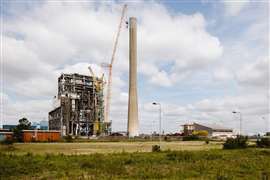Read this article in Français Deutsch Italiano Português Español
Is connectivity the future of construction?
14 December 2023
The construction site of the future has the potential to be connected, which would boost productivity, reduce inefficiencies, improve safety, and enable project costs to be more accurately predicted.
However, achieving such a future requires significant changes to traditional procurement, delivery, and business models before this can become a reality.
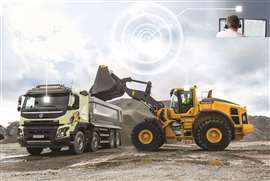
One of the most crucial aspects is ensuring the right mix of connectivity standards, which may require navigating licensing issues. Additionally, regulatory requirements, particularly in relation to telecoms and cybersecurity, will need to be addressed.
As the industry acclimatises to new ways of working, it has become clear that there is no single definition of what a connected jobsite really is. As we enter a future where technology is making a significant impact on our productivity and efficiency, what is the potential for a connected construction site and what are the barriers to its adoption?
Connecting the data in construction
“The connected job site has traditionally meant equipment and works connected to the office over the internet, enabling improved office-to-field workflows. But it is more than that,” says Chris Richardson, senior director of industry workflows in the civil infrastructure sector at Trimble.
“While connectivity is a fundamental underpinning to enhance how construction is executed, the true value becomes when you start to connect the data to the job site; truly connecting the digital to the physical. Linking the design to the pay items in the contract and to the progress and cost of the work being done as it is being done.”
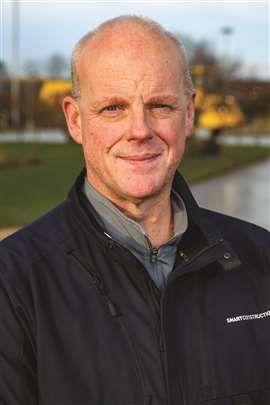 Richard Clement, Deputy General Manager at Smart Construction (Photo: Smart Construction)
Richard Clement, Deputy General Manager at Smart Construction (Photo: Smart Construction)
For Richard Clement, deputy general manager at Smart Construction, the connected construction site involves creating a digital twin of the physical site where people, machines, and materials are all connected.
“Utilising real-time data from terrain, machinery, people, and materials, data-driven decisions can be made, enhancing safety, boosting productivity, and improving profit margins,” he comments.
“One of the significant challenges faced in earthmoving tasks is the unpredictability of what lies beneath the surface. Despite careful planning, unexpected conditions often emerge once digging commences, disrupting original plans.”
Instead of merely dealing with unforeseen circumstances as they arise, a connected site offers a more dynamic solution; it monitors site activities, assesses any deviations, and modifies the plan accordingly, ensuring continuous alignment with the project’s requirements.
An adaptive approach allows for more proactive decision-making on-site, whether it be altering priorities and repositioning equipment to introducing additional machinery or modifying on-site resources.
Clement adds, “This ability to dynamically respond to changing site conditions, rather than ploughing on unadjusted, is the key advantage of a connected job site.”
Cultural technology shift
The construction industry has traditionally been slow to adopt digital technologies, but, says Clement, there have been good reasons for this. “When the margin is slim, people would be more in favour of ‘safe’ working methods, with many choosing to stick with familiar processes despite potential efficiency gains,” he says.
Clement suggests that the introduction of new technology should be accompanied by a cultural shift that supports it.
“This change can be driven by significant opportunities that outweigh the perceived risks. Government entities and major client organisations can also play a pivotal role in this transition. By mandating the use of digital technologies in contracts for infrastructure projects, such as roads and railways, they can encourage wider adoption among contractors.”
Ultimately, the real potential of the connected job site comes from observing how contractors actually work with digital solutions. It’s only through this direct observation, that it is clear if these tools are actually being used to achieve the expected cost savings.
Holger Pietzsch, who was previously at Hexagon and has recently taken up a new role at Moog Construction, agrees that several barriers exist. “I think today, a lot of technologies have been developed independently. Interoperability and compatibility are not always present in hardware, software, and data.”
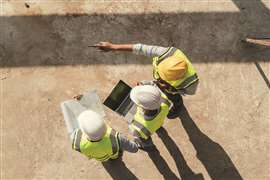
Pietzsch adds that there are excellent technologies on the market, but they are often proprietary. This is no good, he says, for contractors that work with multiple brands of machines or multiple software types.
Trimble’s Richardson, echoes Pietzsch’s sentiments and says that a key barrier to the adoption of connected construction sites is that, “data is locked into siloed workflows in proprietary software tools, which have historically complicated the ability to truly operate as a connected jobsite.”
Integrating data
The positive news is that this is changing, as vendors open up integrations and cloud-based software platforms that allow customers to integrate their data and workflows.
However, this leads to another issue – the skills shortage. “In the digital age of construction that we are in now, a skill set of software and integration-capable employees is highly needed, creating a major demand for skilled engineering staff blended with software development skills,” says Richardson.
Pietzsch agrees that the skills shortage is a significant challenge to successful adoption. “Construction is an industry that still has a reputation that doesn’t make it a target industry for a lot of young talent,” he says.
Jeroen Snoeck, dealer solution manager for Europe at Volvo CE, believes that new technologies do require a mindset change. “Ensuring everyone on site is willing to leverage the benefits that a connected site brings can sometimes be a challenge.
“We know that change is hard after you have operated in a certain way for many years, so we always make sure our digital solutions are as easy to integrate into customers’ operations as possible.”
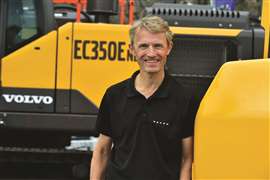 Jeroen Snoeck, dealer solution manager for Europe, Volvo CE (Photo: Volvo CE)
Jeroen Snoeck, dealer solution manager for Europe, Volvo CE (Photo: Volvo CE)
Evolution connectivity
Despite the barriers, there is optimism that technology will evolve to suit the demands of modern construction sites across the world.
Trimble’s Richardson believes that the next evolution around the connected job site is dependent on how the data on the job is used. As the job site becomes more empowered through the integration of data and associated workflows the application of Artificial Intelligence (AI) and Machine Learning (ML) could become a key opportunity.
“These tools will allow the contractor to automate forecasting, schedule optimisation, and better understand the health of their projects as they work,” says Richardson.
Contractors will play a key role in driving the future of a connected construction site, but what role can OEMs play?
Clement from Smart Construction suggests that achieving a fully connected work site – be it today or in the future – is not solely the responsibility of the contractor. OEMS must also contribute by providing solutions that adhere to unified standards.
“Government entities also need to play their part,” says Clement. “The realisation of this vision requires a collective effort from all sides to become a reality. Only when there is synergy in working towards digital advancement will connected job sites become universally achievable.”

Impact of electrification
Standardisation will be a key driver for the adoption of connected construction sites.
“I think there’s going to be more standardisation,” Pietzsch asserts. “There’ll also be more efficiency, which in the end will reduce the carbon footprint. In improving efficiency we will also improve the bottom line for a lot of contractors.”
Pietzsch highlights that electrification will be a positive contributor in terms of connectivity. “I think it helps a lot,” he says. “Because electrified systems are better in terms of machine readability, better in terms of programmability, and better in terms of our carbon footprint.”
In addition to the environmental benefits, Volvo CE’s Snoeck believes that an evolved connected construction site has the potential to enhance safety as well as create a seamless working environment.
“The ultimate vision is where all processes work in the most optimal way, with safety at 100%. To achieve this in an existing operation, it helps to work in small steps, which at Volvo CE we call ‘microservices’.
“Through each improvement in the operation, the site manager and his team learn how to work together more efficiently and safely. The level of change differs depending on sites; on greenfield sites, for example, one can go faster and design the operation in such a way that a lean operation can be implemented from the very start.”
Employing an updated digital twin for all job sites will allow the industry to visualise, plan and execute with precision.
“Instead of using the digital twin as a reactive tool to troubleshoot issues,” explains Clement. “It can be utilised proactively in the planning stage. This proactive approach will ensure that projects are executed with confidence, knowing that the plans are both well-informed and feasible.”
Hilti adds 500,000 tags to Trackunit platform

IoT services provider Trackunit has strengthened its relationship with global OEM Hilti by adding more than 500,000 Hilti On!Track tags to its global network of Bluetooth gateways.
Through this partnership, Hilti says that users will now have improved visibility of their Hilti tools, and will be able to see their ON!Track tagged Hilti tools through an app on Trackunit’s Marketplace within Trackunit Manager.
“By integrating Hilti ON!Track tags into Trackunit’s extensive network, we have not only enhanced the visibility and management of our tools but have also streamlined our customers’ operational experience,” said Michael Neidow, EVP of Hilti’s Construction Software Unit.
Lichtenstein-based Hilti has been in a strategic partnership with Trackunit since January 2022, developing its telematics solution based on Trackunit’s telematic capabilities and global network.
“By opening our global Bluetooth network to Hilti On!Track and introducing our Hilti Marketplace app, we have delivered a comprehensive solution that empowers our shared customers, giving them easy access to critical tool data,” said Soeren Brogaard, CEO of Trackunit. “We are very excited about the future advancements that this collaboration will bring to the construction industry.”
STAY CONNECTED


Receive the information you need when you need it through our world-leading magazines, newsletters and daily briefings.
CONNECT WITH THE TEAM









